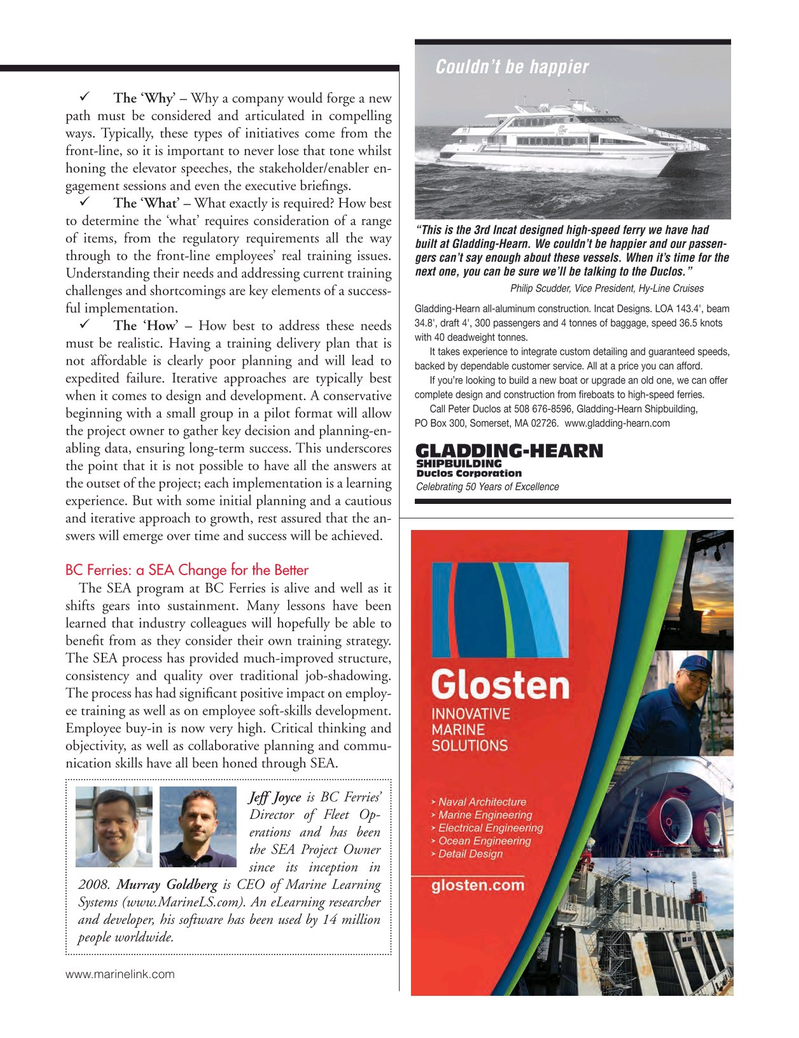
Page 27: of Marine News Magazine (January 2016)
Read this page in Pdf, Flash or Html5 edition of January 2016 Marine News Magazine
9 The ‘Why’ – Why a company would forge a new path must be considered and articulated in compelling ways. Typically, these types of initiatives come from the front-line, so it is important to never lose that tone whilst honing the elevator speeches, the stakeholder/enabler en- gagement sessions and even the executive brie? ngs. 9 The ‘What’ – What exactly is required? How best to determine the ‘what’ requires consideration of a range of items, from the regulatory requirements all the way through to the front-line employees’ real training issues.
Understanding their needs and addressing current training challenges and shortcomings are key elements of a success- ful implementation. 9 The ‘How’ – How best to address these needs must be realistic. Having a training delivery plan that is not affordable is clearly poor planning and will lead to expedited failure. Iterative approaches are typically best when it comes to design and development. A conservative beginning with a small group in a pilot format will allow the project owner to gather key decision and planning-en- abling data, ensuring long-term success. This underscores the point that it is not possible to have all the answers at the outset of the project; each implementation is a learning experience. But with some initial planning and a cautious and iterative approach to growth, rest assured that the an- swers will emerge over time and success will be achieved.
BC Ferries: a SEA Change for the Better
The SEA program at BC Ferries is alive and well as it shifts gears into sustainment. Many lessons have been learned that industry colleagues will hopefully be able to bene? t from as they consider their own training strategy.
The SEA process has provided much-improved structure, consistency and quality over traditional job-shadowing.
The process has had signi? cant positive impact on employ- ee training as well as on employee soft-skills development.
Employee buy-in is now very high. Critical thinking and objectivity, as well as collaborative planning and commu- nication skills have all been honed through SEA.
Jeff Joyce is BC Ferries’
Director of Fleet Op- erations and has been the SEA Project Owner since its inception in 2008. Murray Goldberg is CEO of Marine Learning
Systems (www.MarineLS.com). An eLearning researcher and developer, his software has been used by 14 million people worldwide.
www.marinelink.com
MN Jan16 Layout 18-31.indd 27 1/6/2016 2:49:45 PM

 26
26

 28
28
